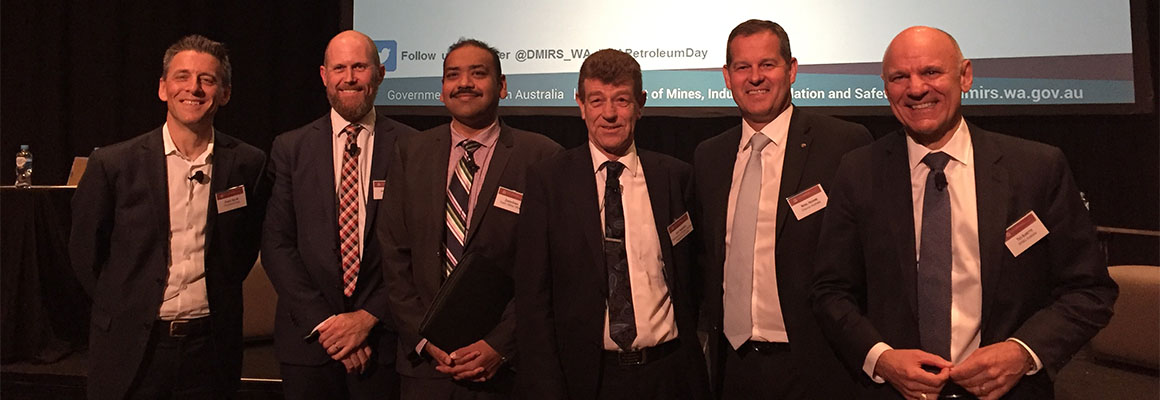feature championing industry collaboration

Chevron Australia Managing Director Nigel Hearne continues to promote industry collaboration in Western Australia, summarising the proposed Carnarvon Basin interconnected gas gathering system in a keynote address at WA Petroleum Day.
Speaking to prominent members of government and industry, Nigel stressed close collaboration and a shared approach would best enable partners to accelerate the development of all fields in Western Australia’s natural gas-abundant Carnarvon Basin as the state enters a new era of operations.
Following an estimated $200 billion of capital investment and construction, WA is now home to 11 LNG trains – of which five are Chevron-operated.
While these resources have elevated Australia to a world-leading LNG producer, industry collaboration is crucial to the sector’s ongoing success and will efficiently and cost-effectively unlock future resources, keep infrastructure full and maintain international competitiveness.
At WA Petroleum Day, Nigel expressed how this collaborative thinking is key to the development of new gas resources and would maximise economic benefits and domestic gas supply for partners, government and local communities.
“It brings extra volumes of domestic gas to shore to power local industry and homes,” said Nigel.
“It boosts revenues which, in turn, is invested back into the community in public infrastructure such as roads, hospitals and schools.
“It drives efficiencies, minimises duplication of infrastructure and guards against resources remaining stranded.”
Speaking to prominent members of government and industry, Nigel stressed close collaboration and a shared approach would best enable partners to accelerate the development of all fields in Western Australia’s natural gas-abundant Carnarvon Basin as the state enters a new era of operations.
Following an estimated $200 billion of capital investment and construction, WA is now home to 11 LNG trains – of which five are Chevron-operated.
While these resources have elevated Australia to a world-leading LNG producer, industry collaboration is crucial to the sector’s ongoing success and will efficiently and cost-effectively unlock future resources, keep infrastructure full and maintain international competitiveness.
At WA Petroleum Day, Nigel expressed how this collaborative thinking is key to the development of new gas resources and would maximise economic benefits and domestic gas supply for partners, government and local communities.
“It brings extra volumes of domestic gas to shore to power local industry and homes,” said Nigel.
“It boosts revenues which, in turn, is invested back into the community in public infrastructure such as roads, hospitals and schools.
“It drives efficiencies, minimises duplication of infrastructure and guards against resources remaining stranded.”
“Third-party economic modelling shows, between 2016-2050 Chevron’s operations are expected to spend $1 billion per year on Australian goods and services and generate more than 2,600 direct and indirect jobs each year.”
Nigel Hearne
Chevron Australia Managing Director
"From Chevron's point of view, this will enable the development of two fields – Clio and Acme, which are 100 percent Chevron-owned,” said Nigel.
"In real terms, its monetisation could equate to around 50 LNG cargoes per annum and around 70 Terajoules per day of domestic gas for WA."
An interconnected basin would see fields like Clio-Acme act as ‘flexible tenants’ of infrastructure with larger fields – such as Browse – acting as ‘anchor tenants’.
Using this shared approach, Western Australia’s suite of world-class LNG infrastructure and facilities would remain full, competitive and reliable.
“The proposed development of Clio-Acme using existing LNG infrastructure would represent a compelling demonstration of a truly interconnected basin.”
Nigel Hearne
Chevron Australia Managing Director